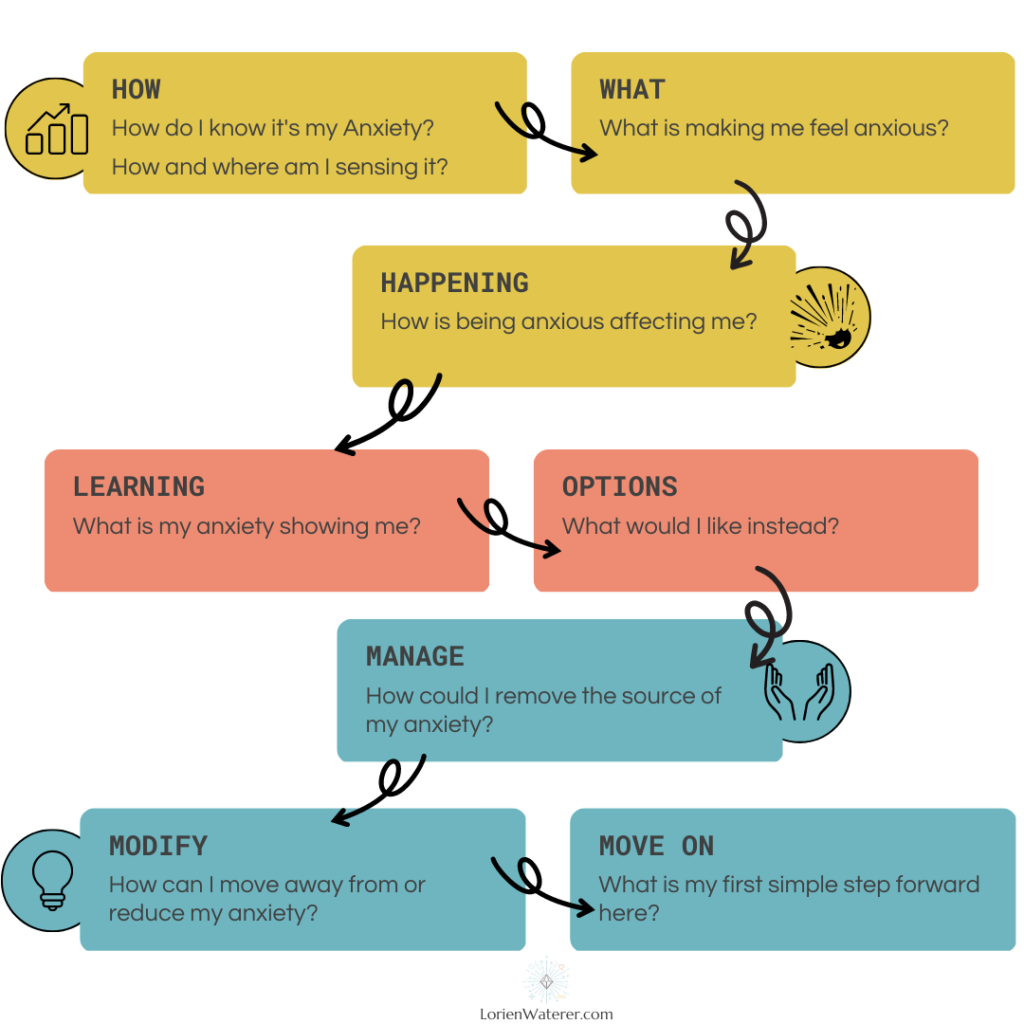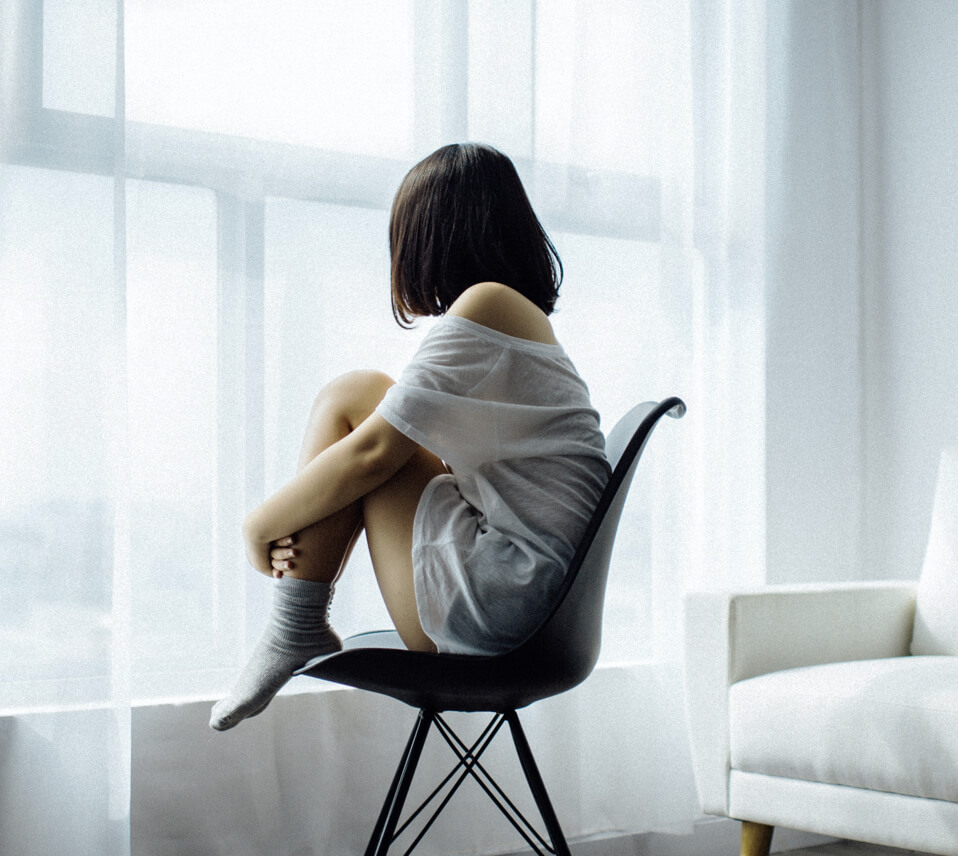8 Step’s To Move Through Your Anxiety
As soon as you feel anxious, regain your sense of control and calm by working through:
-
- How do I know this is my anxiety and not something different for example excitement? (our physical experience of both can be similar – increased heart rate, breathing faster & shallower, jittery). ** If you feel overwhelmed by this part, skip it ** Take a deep breath in and out. In a moment close your eyes and notice where you sense your anxiety. This helps you become aware of how anxiety shows up in your body. Only notice, nothing else. Then open your eyes. Say in your minds eye, I am curious about this anxiety and want to know more.
- What is it in particular that I am anxious about?
- How is being anxious affecting me?
- What is this anxiety showing me?
- What would I like instead?
- How could I remove the source of this anxiety?
- How could I move away from or reduce this anxiety?
- Reflecting thus far, what is my first simple step forward here?

What Does Anxiety Feel Like?
Anxiety is all about anticipation. It is generally associated with a negative expectation. And causes you to have both mental and physical experiences of discomfort. It is usually toward an unknown threat, be real or imagined.
Mentally anxiety increases arousal. That is to say it activates the ARAS – Ascending Reticular Activating System in your brain. This system mediates your wakefulness, autonomic nervous system and endocrine (hormonal) system. This in turn causes the anxiety emotions of:
- Anxious
- Worry
- Distress
- Nervous
- Unease
Along with physical changes in:
- Heart rate & breathing pattern
- Blood pressure
- Sensory alertness (fight or flight response)
- Jitteriness
- Muscle tightness
- Dry mouth
- Nausea
- Sweaty palms
- Tingling in the hands & feet
- Difficulty sleeping
Why Do We Get Anxiety?
It is useful to know that ‘anxiety’ related mental and physical arousal is important for your consciousness, alertness, attention and information processing. It is central to motivating you for certain behaviours. For example, mobilisation, food searching (hunting and gathering) and not to leave out its role in a sexual context.
The combination of both the mental and physical state of anxiety is geared up for:
- Firstly getting your attention. A signal alerting you that something is wrong or there’s a potential threat.
- Secondly to activate your psychological and physical resources needed to deal with it by helping you make necessary change and to facilitate response.
How Anxiety Can Be Good For You
Remember, having occasional bouts of anxiety is very normal. It has been reported that over 60% of adults experience anxiety periodically. Perhaps it can be considered a ‘trade off’ in enabling us humans to imagine our future.
For many, having temporary moments of anxiety can be a productive state. Especially if the change and response, most notably behaviour, lead to an aligned and or good outcome. It is believed the overall positive intention of anxiety is for helping you to protect what you care about.
If you experience this level of anxiety and want to be able to manage it, utilise it and feel less anxious, seeking Qualified / Licensed Integrated Coaches and Therapists for Stress Management Techniques will be of huge benefit to you.
When Anxiety Becomes a Problem
However, when these occasional bouts go into overdrive and are out of control, this multi-useful arousal system can do more harm than good. When this happens, it may indicate one is dealing with an anxiety disorder. With an anxiety disorder, the discomfort it causes and how it affects one’s ability to function normally are at a constant.
It has been reported that over 30% of adults experience an anxiety disorder. These include GAD – General Anxiety Disorder, Social Anxiety Disorder, Panic Disorder and various Phobia-Related Disorders (please view NIMH for further information). If you experience anxiety in this way, it is advisable to seek help from your health physician for the possible need for multiple interventions to include psychotherapy, medication, support groups as well as stress management techniques.
So as you now know, anxiety is very common. It may show up the same or different for each of us. Most of us have anxiety we can manage, a lot of us want to make better use of it with the help of professionals and some of us need additional medical help especially when anxiety takes over living a normal life.


